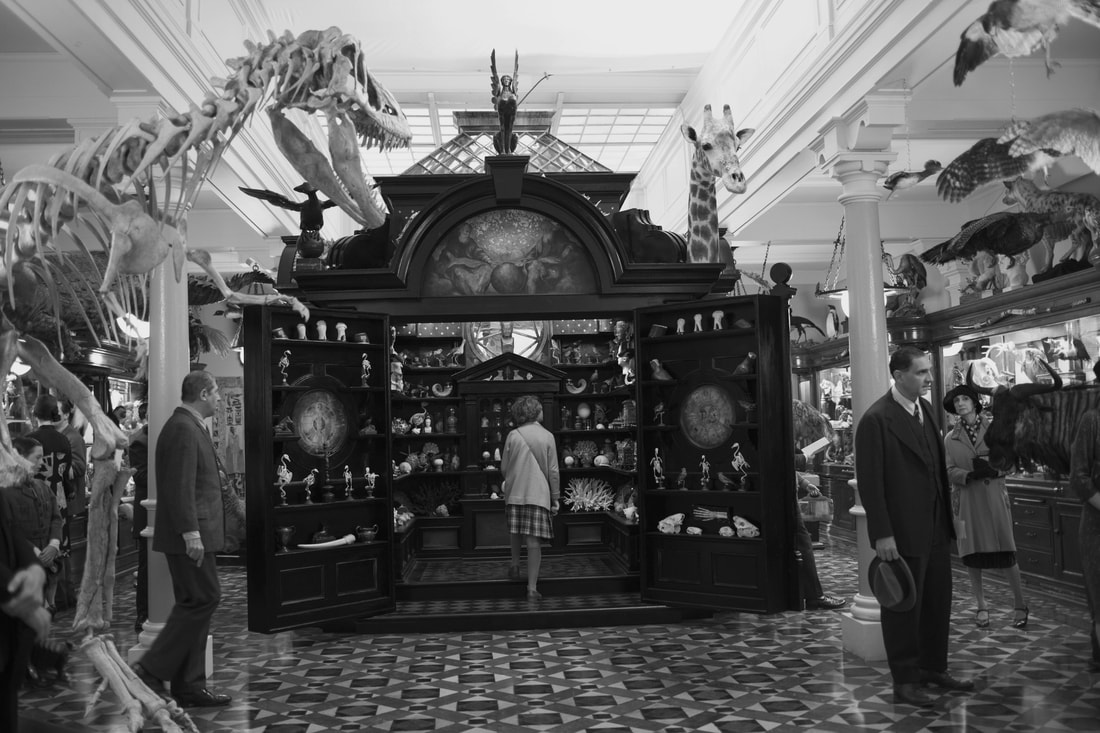The intertwined plot effortlessly bounces back and forth between the gauzy, realist film that Ben’s in and the black-and-white silent film that Rose occupies. Haynes not only changes the look as he swaps eras, but the hard-working score by Carter Burwell is also altered. Connections between the two are dropped for the attentive viewer, signaling the likely destination but not lessening the immediate charm of Ben’s and Rose’s respective adventures and the ultimate power of the entire film. The biggest connection is the museum, where Rose ends up and where Ben is led to by lonely kid Jamie (Jaden Michael). The exhibit that draws them both there is where the film gets its name. The Wonderstruck exhibit is recreations of curio cabinets that unfold endlessly, revealing new treasures on each nook and cranny. Emblematic of the nesting-doll nature of the film itself, these cabinets earn the titular designation, wowing the kids who see them and the viewer themselves.
Awe is always amped up when generated through the eyes of a child, as they’re always closer to that state and can access it more readily. Wonderstruck stays tapped into young sensibilities as an argument for free-range parenting and all the myriad joys it can bring. There’s obviously a distance between taking the bus from Minnesota to New York, but the museum as a playground is an irresistible environment. Rose escaping there to gawp at every new sight is watching a person write a memory in ink. Jamie, whose father works at the museum and is therefore a regular, leads Ben through unknown corners and attics of the museum, hiding from security guards and napping next to stored exhibits. Outside of these centerpieces, Haynes and Remnick get how kids act, especially when they’re excited. Ben hilariously keeps forgetting he’s deaf, while Rose, mute as well as deaf, has no problem expressing herself with adorable half-smirks and facial contortions reminiscent of the iconic picture of McKayla Maroney on the medal stand. David Bowie’s Space Oddity plays throughout the film, and that timeless ode to loneliness creates the baseline for Ben and Rose and Jamie. Seeing them either remedy it or momentarily forget about it is the cathartic salve these sad-kids-are-sad films live on.
The kid actors are the leads, overshadowing the adults by a wide margin in staying power and screentime. Williams, barely in the film, is practically an afterthought. The exception is Moore, who at this phase in her career is unstoppable. She has tapped into a part of my brain that is autonomic, wherein if she is wearing a certain warm expression, the eyes start to water. She’s in first-act Still Alice mode for a good chunk of the film, where her maternal aspect is overpowering. Wonderstruck eventually becomes a tearjerker built around Moore’s character, and there are few calmer and more reliable centers on which to build a big finale.
Wonderstruck, like Hugo, isn’t objectively perfect, especially in its storytelling. There are vast holes in Ben’s plot, such that it seems cruel of his mother and his extended family for him to know so little about his father. Details are hidden for the big reveal, a trope that usually bothers me. However, that reveal works so well that I could readily overlook mechanics. Ben’s storyline is premised on a lightning strike, a rare occasion that here is a harbinger of more rare events and coincidences. Just the presence of that lightning strike tells the viewer that this is the kind of story we’re telling, where unlikely things happen. There is a force in Wonderstruck’s universe that is pushing characters toward places and people. Much like a non-Miyazaki Ghibli film I love for its copious tear generation, When Marnie Was There, the characters are learning that there’s more support for them in the world than they were aware of. That is such a potent feeling and realization that the film that communicates it gets a pass on its blunders. A-

 RSS Feed
RSS Feed